A savoury cake by a great Spanish chef
Thursday, November 30, 2017
Today I would like to show you a very simple but good recipe: "Leeks and Prawns Cake", by the great Spanish chef, Karlos Arguiñano.
These are the Ingredients (for 6 people): 4 leeks. 250 grams of prawns. 7 eggs. 400 millilitres of liquid cream. 1 seed bread. Butter and flour (for the mold). Extra virgin olive oil. Salt. Pepper. Nutmeg. Parsley.
For cooking the recipe, this is what you have to do: cut the bread, in thin slices, extending them, on the oven plate, and toast them until they are golden brown.
Wash the leeks, finely chop and poach, in a pan with oil. You have to poach them well, until they are very soft. Peel the prawns, cut them into pieces, add salt and pepper and add them to the pan of the leeks. Stir fry them briefly, and remove the pan from the heat.
Spread a long mold with melted butter, put a strip of baking paper lengthwise, so that it protrudes; put butter again and sprinkle with flour. Then add the leeks and prawns.
Beat the eggs, in a bowl; add salt; add the cream; grate a little nutmeg, on top, and mix well. Pour the mixture, in the mold, and bake it, in a bain-marie, at 180 º C, for 45 minutes. Then, let it temper, unmold and cut the cake, in portions.
Sauté the heads and shrimp shells, in a pan, with a small stream of oil. Crush and drain in a colander.
Serve the cake, with the slices of toast and the juice of prawns. Garnish the cake with some parsley leaves.
And, after all, this one must be the result:
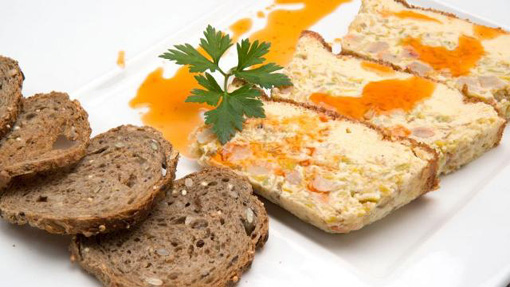
Leeks and prawn cake
Well, I hope that you will like this recipe and hope that you will want to try to cook it.
Until my next post, kind regards,
Luis.
Sponsored by Costaluz Lawyers.
Please click below:

 1
Like
Published at 9:53 AM Comments (0)
1
Like
Published at 9:53 AM Comments (0)
Another very curious Spanish expression
Monday, November 27, 2017
Have you ever heard the expression “Tomar las de Villadiego” (“Take those of Villadiego")?. In case you have not heard it, you will find the explanation here.
"Take those of Villadiego" has gone down in history as an expression of who is absent, in a hurry, to escape from risk or compromise, as many of those Jews, who in the Middle Ages were to take refuge, in the Village of Villadiego, 38 kilometres northwest of the city of Burgos.
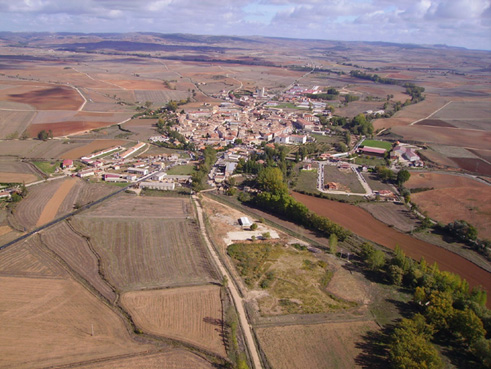
Villadiego
The Castilian town, founded by Don Diego Rodriguez Porcelos, had been privileged with a commission from Fernando III el Santo, confirmed by Alfonso X El Sabio, in 1255, which granted protection to the Jews, from the constant persecutions to which they were subjected.
"The main square, porticoed with double portals, of Villadiego is a vestige of the Jewish past of the village", says Antonio Martínez, author of the book "The happy saying: Take those of Villadiego" (Ediciones Balnea). They were, with their complaints, who led to the construction of a second arcade, in order that their potential customers could wander, in case of rain, as explained by this civil servant, native to Villadiego, who shall be 70 years old, in August, and who has spent eight years investigating the origin of the saying about his village.
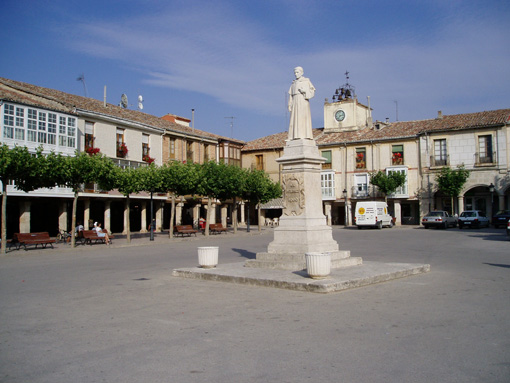
Father Florez in the Plaza Mayor of Villadiego
"The fleeing has been said because the Jews took refuge, in Villadiego, because they were very persecuted for the money, that they earned with the loans", says Martinez.
In the back door of the parish church of San Lorenzo, a tablet still remembers the royal privilege with its inscription "Church of asylum". The local researcher reports that "the Jews, arrived at Villadiego, came through that door and left by the main one, with the breeches.".
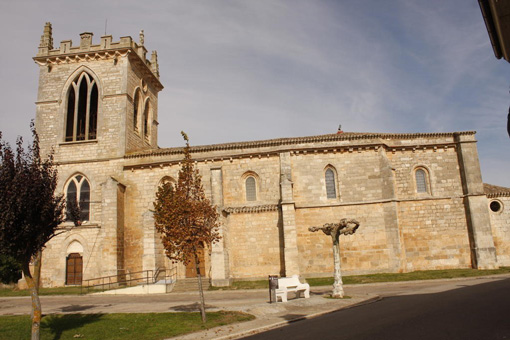
The church of San Lorenzo in Villadiego
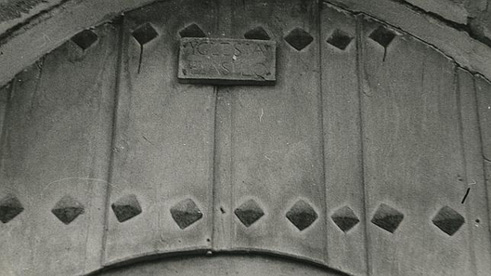
Clapboard on the door of the church of San Lorenzo
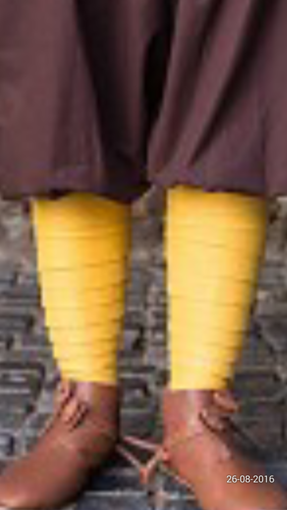
Breeches for jews in the Middle Ages
Because "those of Villadiego" refers to the breeches, that were used at the time. “Everyone was wearing them. They were like pantyhose. Those of the priests, for example, were red in color and the Jews had to wear yellow”, says Martinez, who in the book details the details of this outfit and recalls how "today we continue to use the word "stockings", for breeches that covered up to the knee”.
The coincidence, that there was a saddlebag industry in Villadiego, induced some people to think that it was these, which were taken before going out hurriedly. «If you want to know what it is to take those of Villadiego, accept any of the versions. That saddlebags are made or that espadrilles are made here. Two "articles" of travel», said Víctor de la Serna. Others speculated that the name of Villadiego would be "villa de equo", ie, of horses, with which the escape would be easier.
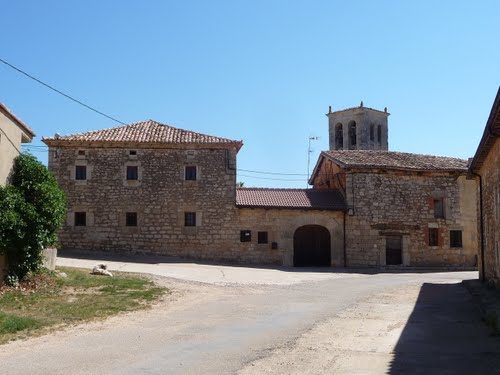
Some houses of Villadiego
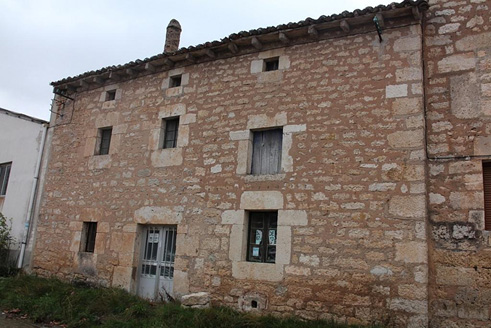
A house for sale
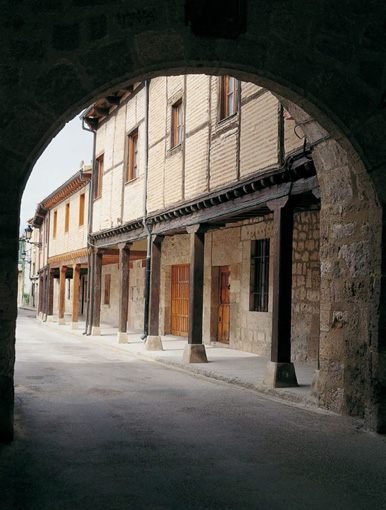
A street of Villadiego
Many people have enquired about the origin of this old saying, that Fernando de Rojas already mentions, in "La Celestina", and Miguel de Cervantes, in Don Quixote. For the priest, Luciano Huidobro Serna, who was the official chronicler of Burgos and archivist of the diocese, "what contributed most to the propagation of the phrase was the tenth", that today reads on the facade of the Town Hall: "Villadiego was a soldier; that to San Pedro, on occasion; to be in hard prison; he never failed him, on the side. The winged spirit came; and full of living fire; he says to Peter: Go on then; Take the breeches, do not argue; Pedro, for taking his ones; took those of Villadiego".
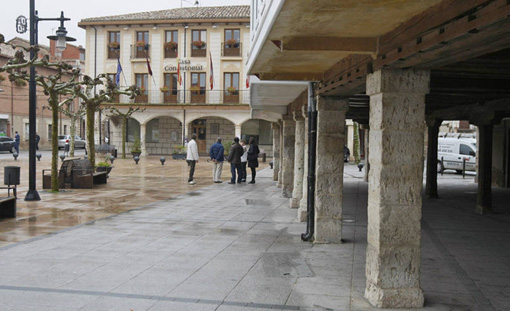
The City Hall in the Plaza Mayor
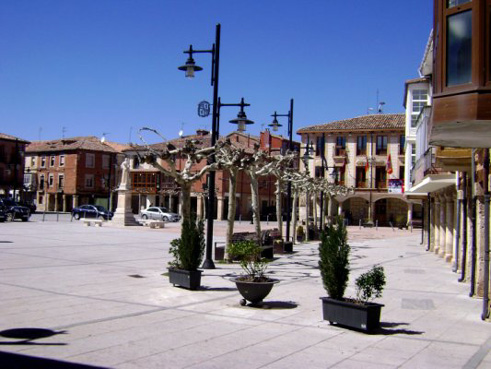
Plaza Mayor with the City Hall on the right side
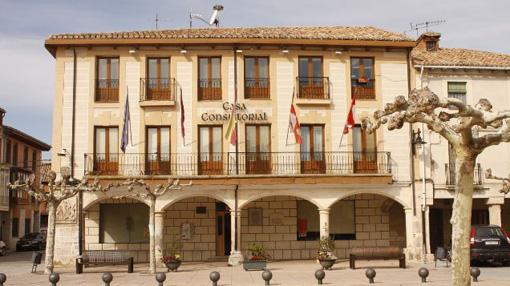
The façade of the City Hall
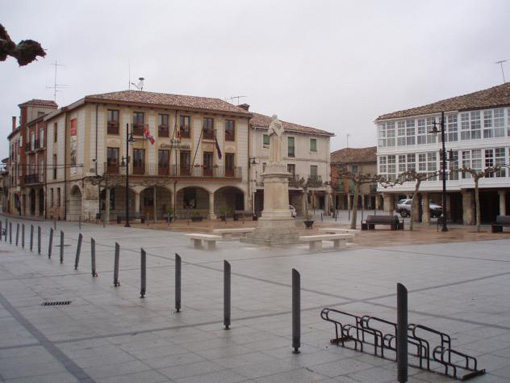
The famous phrase on a plaque on the left side of the façade
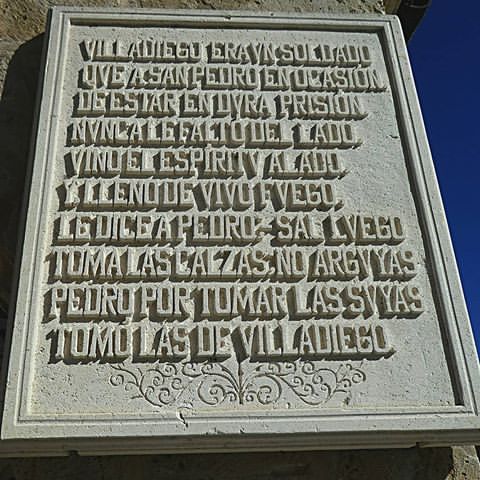
The plaque with the famous phrase
On the other side, a relief by Andrés Martínez Abelenda, from Burgos, depicts the liberator angel, ordering San Pedro to get ready to leave the prison and he with such haste that he mistakenly takes the breeches of the soldier Villadiego, who sleeps deeply.
«These absurd verses (because it is absurd to suppose that, in the prison of Rome, where Saint Peter was, there could be a soldier whose name was Villadiego), far from explaining the origin of such a debated phrase, they do nothing but apply it, composing a joke», says José María Iribarren, in “El porqué de los dichos” (“The cause of sayings”)».
Luciano Huidobro himself, who alluded to these verses, already related the saying with the breeches of the Jews. «Among all the opinions, the one, that seems to have some historical basis, supposes the general opinion of relating this saying, already universally known, with the existence of certain breeches, that were made in Villadiego, equal or similar to those that the Hebrews had to use flee, from one place to another, in search of refuge or hospitality", he said, in a speech, in 1953, before adding that "the obligation to wear a suit or clothes different than those worn by Christians, lasted, in Spain, until the time of the King San Fernando. And from here, that people said, when encountering a persecuted or fugitive Jew: "That one took those of Villadiego"».
The chronicler from Burgos searched, without success, documentation on this expression, in Villadiego, as Antonio Martinez has done, in recent years. "There is very little", laments the researcher, who blames the French troops, for the Napoleonic invasion of the burning of the local archives. However, he emphasises that "the breeches are true", so the version of the Jewish refugees, in Villadiego, "is the most credible".
I do not know if the chronicler from Burgos went to the Municipal Museum, in order to search documentation, about Villadiego.
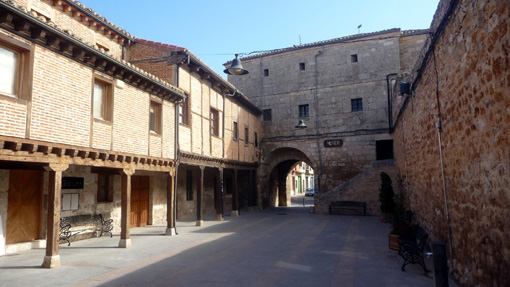
The Municipal Museum
If you want to know this village personally, I recommend that you stay at the rural house, "Las de Villadiego" –but in Villalibado, near Villadiego--.
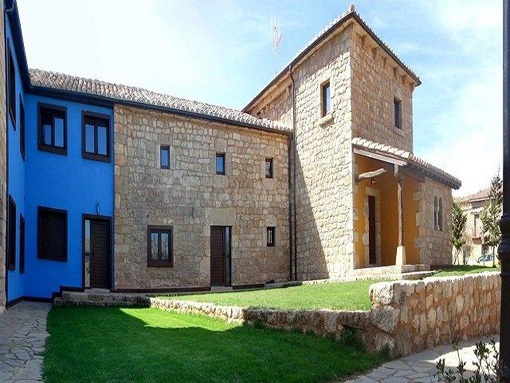
Farm house Las de Villadiego in Villalibado
Well, I hope that you will like this article about that famous expression in Spain.
Until my next post, kind regards,
Luis.
Sponsored by Costaluz Lawyers.
Please click below:

 0
Like
Published at 9:34 AM Comments (0)
0
Like
Published at 9:34 AM Comments (0)
Another spanish saying and proverb 77
Monday, November 20, 2017
Today, I would like to talk to you about a very curious saying: "Blotch and new account".
According to the Dictionary of the Royal Academy of the Spanish Language, a blotch is a stain produced, on a paper, by crossing out the written or drawn or by pouring ink on it.
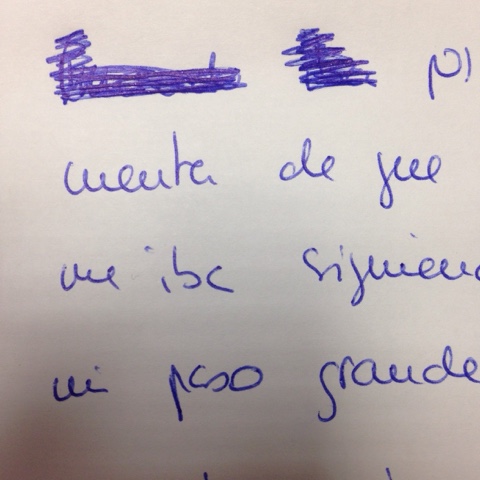
A blotch at the beginning of the text
But blotch also means “Imperfection that fades or makes something ugly”.
Through this figurative phrase, it is expressed the purpose, not always sincere, to correct and throw into oblivion any affront or vicious conduct, and continue as if nothing had happened. So, for example, that dipsómano (a person who drinks alcohol without control), whom the doctor told him, after convincing him with great patience: "I warn you: the liver and alcohol are incompatible.". The patient replied: "Oh, yes ...?. Well, doctor, I will not eat liver again.”.

The doctor worried
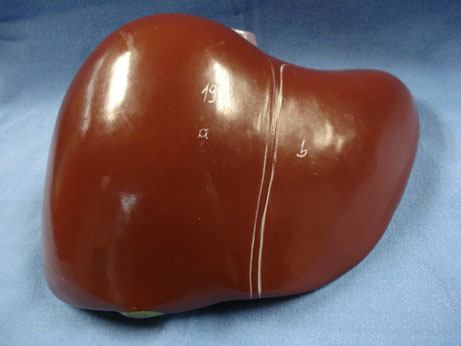
A healthy human liver
Well, I hope that you will like to know this saying.
Until my next post, kind regards,
Luis.
Sponsored by Costaluz Lawyers.
Please click below:

 0
Like
Published at 9:23 AM Comments (0)
0
Like
Published at 9:23 AM Comments (0)
A very spanish expression
Thursday, November 16, 2017
Do you know what "being in Babia" means?. Well, just in case you do not know, I am going to explain it to you.
Babia is a region of the province of León (in the northwest of Spain). To the North, it is limited to Asturias; to the East, with the region of Luna; to the South, with the region of Omaña; and to the West, with the region of Laciana.
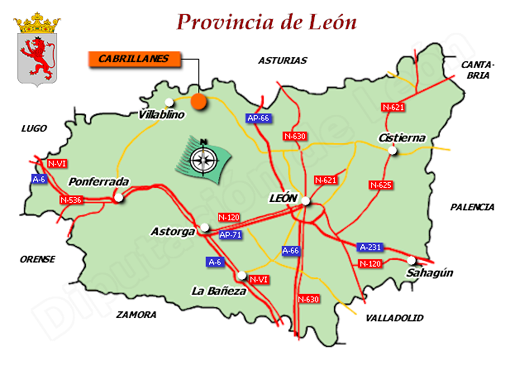
The province of León
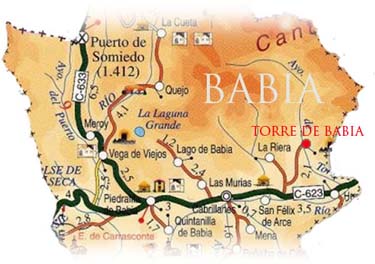
A map of the región of Babia
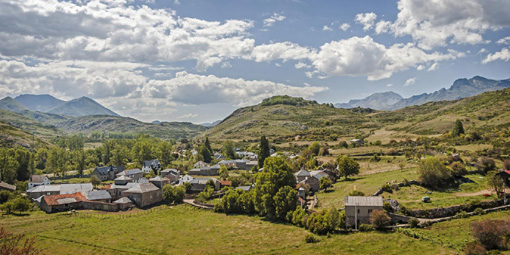
The village of Babia
Its abundant water and green meadows determine the wealth of livestock, in this region. It highlights the transhumance of Merino sheep, which share the pasture with cattle and equine livestock, --especially the Hispanic-Breton breed--.
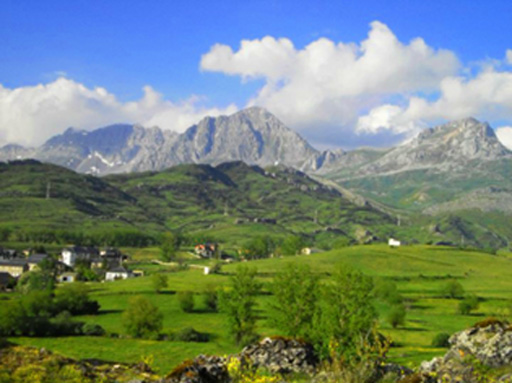
A meadow with the mountain Peña Ubiña
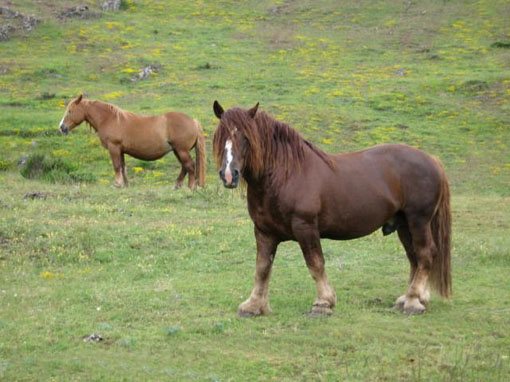
Horses from Babia
In the Middle Ages, Babia was divided into 2 Councils: Babia de Abajo
--which is now the City Hall of San Emiliano-- and Babia de Arriba, now the City Council of Cabrillanes.
In 2004, the Babia region was declared a "Biosphere Reserve" by UNESCO.
In the Middle Ages, the Kings of León had a palace in this area, where they spent long periods, especially in summer period. Their subjects justified the absence of their monarchs by saying that they were in their summer residence. The Babian environment supposedly produced a relaxing effect on the Kings, who isolated themselves from their problems and concerns; in the same way, when they did not want to receive someone in audience, their ministers said that "they were in Babia". Another version is the one that says that, at the end of the summer, the shepherds went in transhumance with their livestock to Extremadura and, when they were all at night in front of the fire, there was always someone who felt nostalgia for the land, until another one was he would approach and say "hey, wake up you are in Babia!", his mind "was in Babia".
Nowadays, the expression "being in Babia" defines any person who is distracted or absent.
The district of Babia is divided into two parts: Babia de Arriba and Babia de Abajo. Babia de Arriba is made up of villages such as: Cabrillanes, La Cueta, Huergas de Babia, Lake Babia, Piedrafita de Babia, La Riera and Torre de Babia.
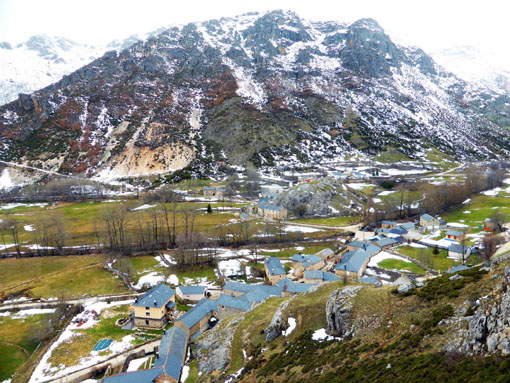
Torre de Babia and crag Escrita at the background
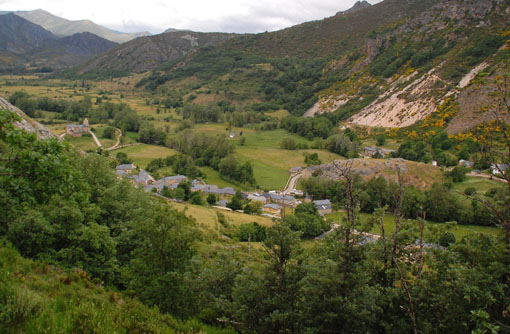
Another view of Torre de Babia
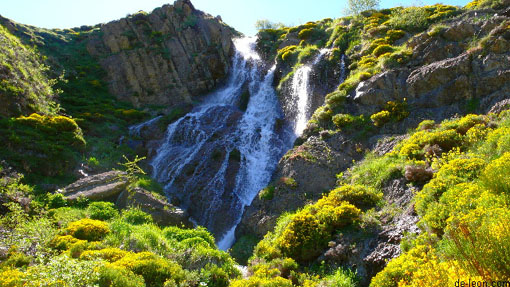
Cascade near Torre de Babia

Farmhouse Las Verdes in Torre de Babia
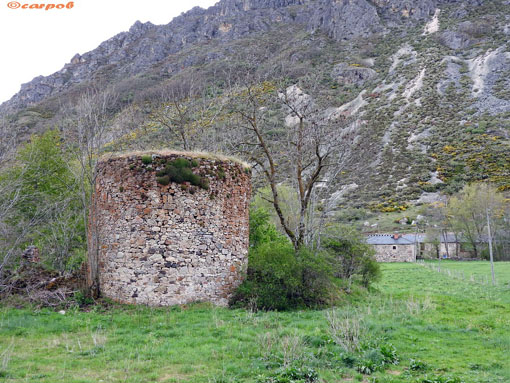
Crag Orniz from Torre de Babia
And Babia de Abajo is made up of villages such as: Candemuela, Cospedal, Genestosa, Pinos, Riolago de Babia, San Emiliano, Torrebarrio, Truébano de Babia, Villafeliz de Babia, Villargusán.
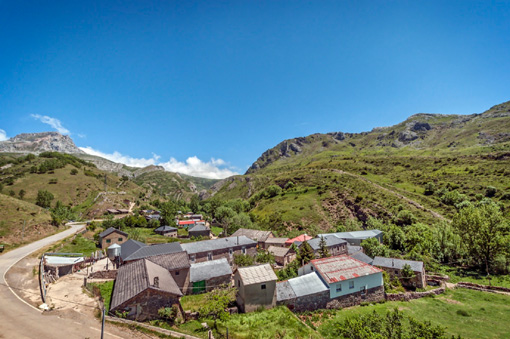
Pinos
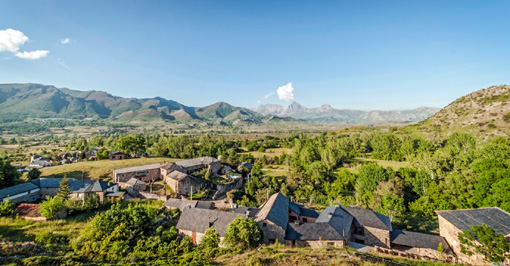
Riolago de Babia
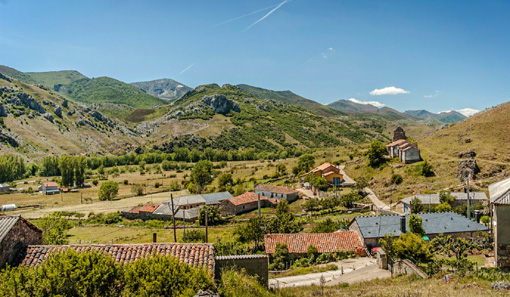
Villafeliz de Babia through the road CL-626
Other interesting places in the region of Babia are:
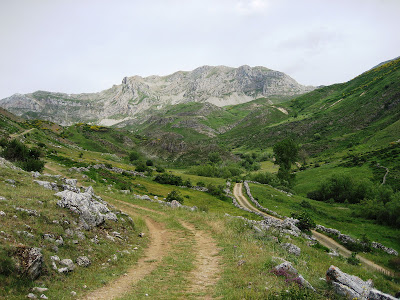
The path of the beech forest
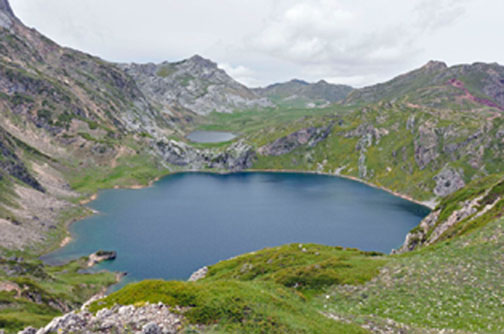
Lakes of Somiedo
Well, I hope that you will like this story and hope that physically you can "be in Babia" sometime.
Until my next post, kind regards,
Luis.
Sponsored by Costaluz Lawyers.
Please click below:

 3
Like
Published at 9:03 AM Comments (0)
3
Like
Published at 9:03 AM Comments (0)
Zarangollo: a dish with vegetables from Eastern Spain
Monday, November 6, 2017
Today I would like to show you a famous recipe from Murcia (Eastern Spain): “The Zarangollo”.
The Zarangollo is a typical dish of vegetable garden products (this case in Murcia), that consists of a scrambled egg made with zucchini, onion and potato, occasionally.
It is usually served at a lukewarm or hot temperature.
But it should not be confused, with the zorongollo from Extremadura, by phonetic similarity. The zorongollo is a dish usually prepared as an accompaniment to roasted meats, an example is roast lamb. It is a very popular salad, in Extremadura. These are the Ingredients: Red pepper, onion, garlic, olive oil, vinegar and salt.
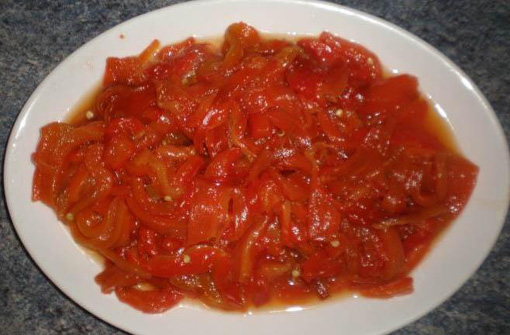
Zorongollo from Extremadura
All the necessary ingredients, for cooking the Zarangollo, are part of the variety of garden vegetable products. Sometimes it is seasoned with aromatic herbs (oregano) and spices (pepper). It is very common to see it served, as a tapa, in the bars of Murcia. Depending on the authors, the egg may not appear in the recipe.
Traditionally, the Zarangollo has potato, but it began to be incorporated, in the absence of zucchini, so nowadays it is normal to find it prepared with both ingredients, simultaneously.
The zucchini ratatouille is a recipe from La Mancha and Murcia; the latter derived from the Zarangollo, to which are added zucchini, pepper, tomato or even pumpkin.

Zucchini ratatouille
The Zarangollo is not eaten as a main dish, it can be an appetiser(tapa) very frequent, in bars, accompanied by wine, or be served as an accompaniment to other dishes (usually hot) as different fish dishes. It is also customary to serve it cold, accompanied by a little bit bread.
If you want to cook it, these are the Ingredients (for four persons): 2 zucchini. 2 chives. 4 eggs. 1 loaf of bread (small). Extra virgin olive oil. Salt. Oregano. Pepper. Parsley.
To make it, you must do the following: Dice the chive, in thin julienne, and put it to poach, in a pan, with a little stream of oil. Wash the zucchini and cut into thin slices, with skin, and add them. Cook everything over low heat until it softens.
Break the eggs, in a bowl, and beat them lightly. Add a pinch of oregano, salt and pepper.
Then you have to pour the eggs, in the vegetable pan, mix and set, until you get the desired point.
Dice the bread into slices and toast. Serve the bread with the Zarangollo and garnish with parsley leaves.
And this must be the result:
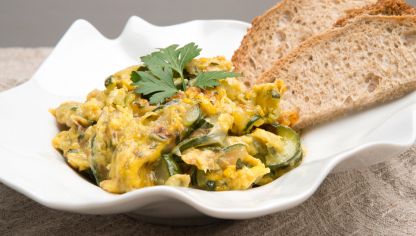
The Zarangollo
Note: Zucchini contains a lot of water, although it has few proteins and fats. Its content on fiber, vitamins and minerals make it an ideal ingredient, in diets for people with overweight, hypertension, digestive problems, constipation or fluid retention.
Well, I hope that you will like and cook this recipe. If it is so, please tell me it.
Until my next post, kind regards,
Luis.
Sponsored by Costaluz Lawyers.
Please click below:

 0
Like
Published at 8:54 AM Comments (0)
0
Like
Published at 8:54 AM Comments (0)
Spam post or Abuse? Please let us know
|
|